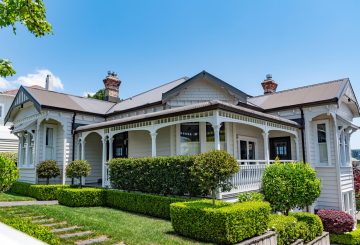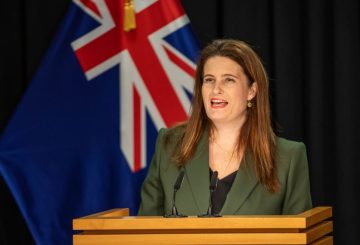방학 첫 주에는 전국 대부분 지역에서 폭우와 강풍이 예상됩니다.
화요일은 대체로 맑겠지만, 화요일 오후까지 남서부에서 비가 시작되면서 구름이 더 많이 나타날 것입니다.기상학자 루이스 페리스 (Lewis Ferris) 는 수요일과 목요일에 최악의 날씨가 발생할 가능성이 높다고 말했습니다.수요일 밤 남섬 상부에 폭우가 내린 후 북섬 상류로 폭우가 내릴 것으로 예상됩니다.
남섬 서부와 북부에는 호우 경보가 내려져 있어 주황색 경보로 바뀔 수 있습니다.북섬 일부 지역, 특히 베이 오브 플렌티에서도 폭우가 내릴 수 있다.태즈먼 해의 저기압 시스템에서 비가 내려 따뜻하고 습한 공기가 유입됩니다.즉 기온은 따뜻하지만 강한 북동풍과 함께 폭우가 올 가능성도 높아집니다.
베이오브플렌티는 9월이 건조했는데, 특히 화카타네는 9월 강우량의 약 30% 에 불과했다.수요일 밤부터 목요일까지 비가 올 것으로 예상되므로 이번 달보다 더 많은 비가 올 수 있습니다.
이와는 대조적으로, 차가운 공기는 남섬 남부 절반에 영향을 미쳐 오타고 내륙과 캔터베리 남부에서는 눈이 약 500미터까지 내려갈 위험이 있습니다.이 지역에서도 폭우가 내릴 수 있습니다.
니와의 기상학자 세스 캐리어 (Seth Carrier) 는 수요일에 더 활발한 날씨가 시작될 것이며 수요일에는 습기가 급증하여 남섬 상부에 폭우가 내리고 수요일 밤부터 목요일 아침까지 북부에 폭우가 내릴 것이라고 말했다.
화요일에는 북섬 대부분과 남섬 대부분 지역이 대체로 건조할 예정이다. 단, 특히 오후부터 비가 내리기 시작하는 서부 해안을 제외한 남섬 대부분 지역이 건조할 예정이다.
많은 지역에서 약한 바람이 불 것으로 예상되며, 웰링턴과 같은 북섬 중부 지역과 남섬의 고지대에서는 돌풍이 거세게 불 것으로 예상됩니다.기온은 대체로 쾌적하며 오클랜드와 웰링턴의 최고 기온은 17°C, 해밀턴의 경우 18°C, 크라이스트처치와 더니든을 포함한 남섬 일부 지역의 경우 약 15-20°C입니다.





























































